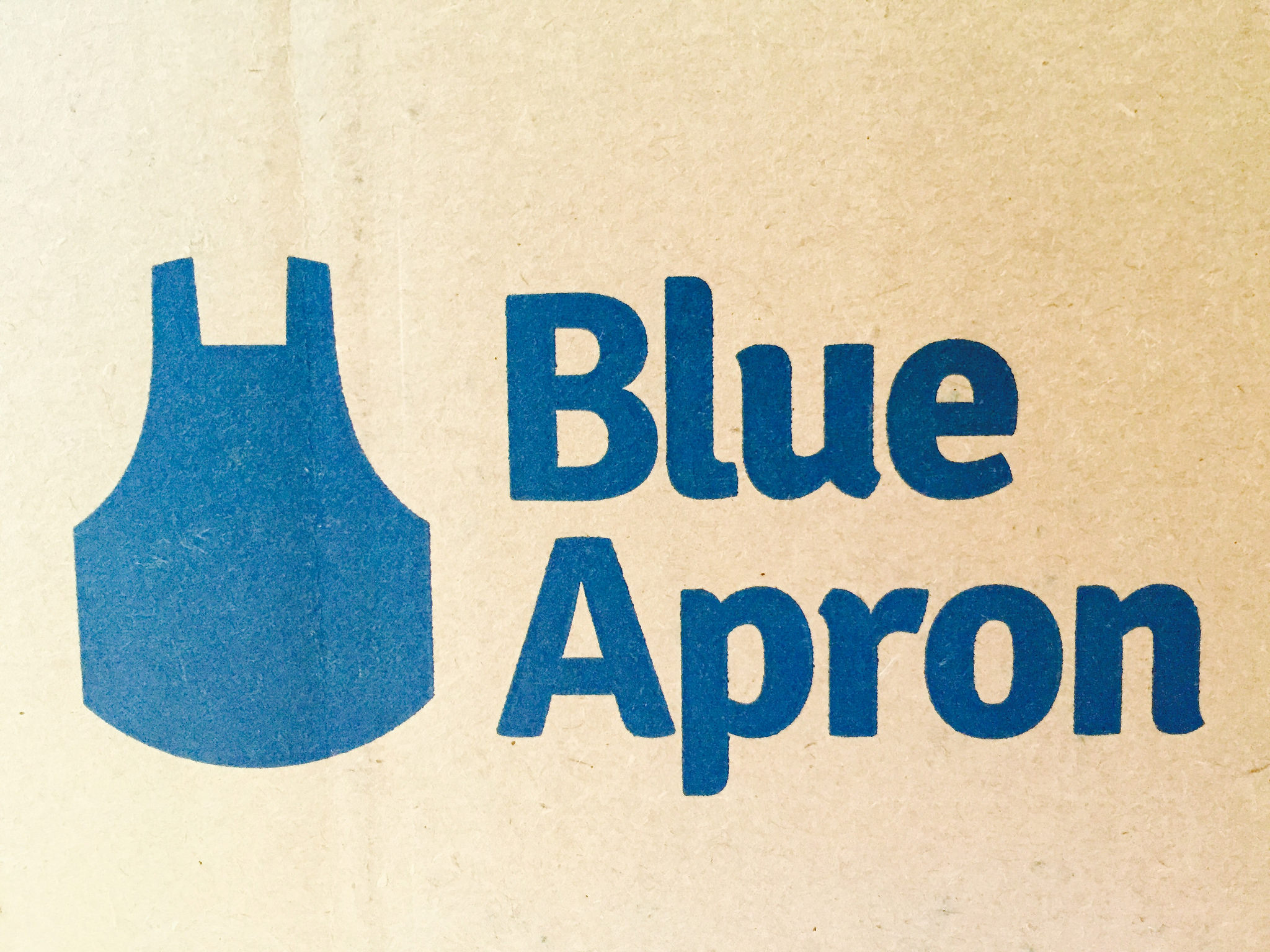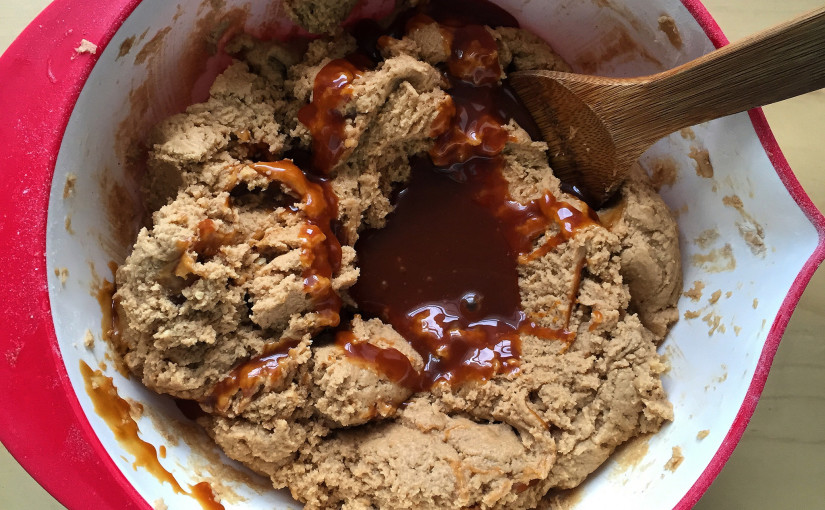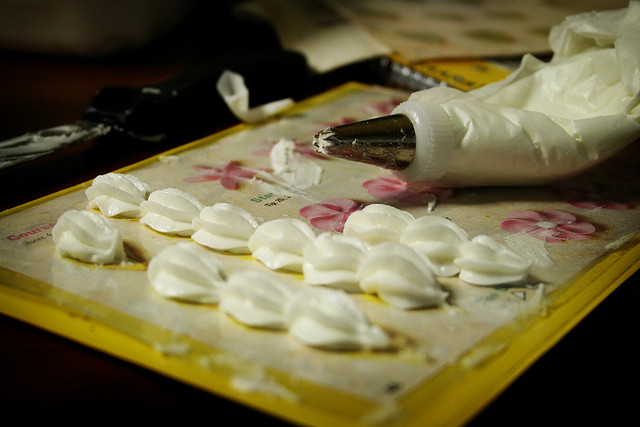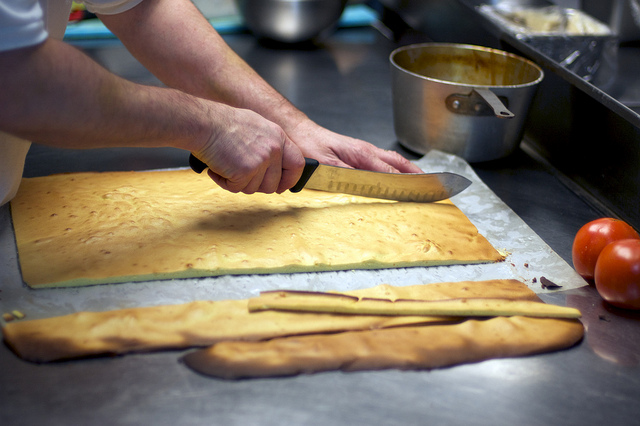Last week I got to try Blue Apron with a friend’s referral code. I’ve had a few friends use Blue Apron in the past, and I’ve been curious about it for a while. Overall, it was a great experience, but I chose not to continue it. I do have some mixed thoughts on the product, and I thought I’d share them in case anyone else is considering Blue Apron for themselves.
What I Liked About Blue Apron
1. Meal-Based Recipes
One thing I really, really liked about Blue Apron is the meal-based format of their recipes. When you’re cooking on a time crunch or don’t have a lot of experience, it’s nice to know how to pace multiple dishes to be done at the same time. From doing prep all at once to timing each step correctly to make sure everything comes together simultaneously, Blue Apron’s recipes do a pretty good job of creating meals, not just dishes. I would still recommend that you read through the entire recipe before you start — there are a few “prep” things that are placed halfway through the cooking process that I’d prefer to do at the before I start heating anything up.
2. Tasty Recipes and High-Quality Ingredients
The ingredients were fresh and high-quality. I was worried that the produce would be subpar, since I wasn’t sure what the delivery process looked like, but everything was of a quality I would have bought if I had gone to the store and picked it out myself.
Every single recipe was delicious, and I’m sure I’ll make them again. Blue Apron has done a great job developing recipes that are well-balanced and flavorful. They were healthy; not necessarily the kind of food I’d eat if I were trying to lose weight, but not too heavy. There was a good mix of whole, fresh ingredients that weren’t overly salty, fatty or cholesterol-laden.
3. Convenience
They bring the box right to your door! It’s packed with large ice packs and well-organized. As I unpacked, I realized that the pork chop packaging had been torn during shipping, but because of the way everything was packed it didn’t leak on anything except the ice pack. I usually spend a good amount of time deciding what to cook and shopping for ingredients each week, but with Blue Apron I didn’t have to. It was a nice break from the norm, and I can see how having everything delivered ready-to-cook would be a huge boon to busy individuals or families.
What I Didn’t Like about Blue Apron
1. Not enough cooking jargon
On one hand, jargon can be alienating and confusing. On the other hand — the hand you’re learning to cook with — it’s an important way to describe techniques, and most recipes use some level of lingo. Blue Apron recipes tend to eliminate these cooking words in favor of simpler ones. One of the recipes called for quick-pickled onions, but the word “pickled” strangely didn’t appear anywhere on the recipe. The technique was there, (soaking sliced onions in red wine vinegar), but without the jargon or outside knowledge, you wouldn’t necessarily know that. Understanding the language and the techniques behind them are an important part of learning to cook.
2. Portion Size
While the dishes weren’t meager, I did find myself wishing I had a little extra each night. I usually cook relatively large portions for myself and my boyfriend so that we either have leftovers for lunch or a second helping. I supplemented all but one of the meals with a secondary side dish, to make sure we didn’t get hungry later, and it seemed liked just enough food. That said, if you don’t have quite a big eater at the table, you’ll probably find Blue Apron’s portions to be just right.
3. Packaging Waste
One of the biggest problems I saw with Blue Apron was the amount of packaging it involved. Any ingredient that wasn’t whole and somewhat shelf-stable was packaged in small plastic cups or bags. I appreciate the fact that finding cheap, tough, lightweight alternative packaging solutions can be tough. However, I try to minimize kitchen waste wherever possible. This means purchasing larger quantities and opting for products with less packaging wherever I can. I’m sure Blue Apron is working to improve their packaging, but their current model doesn’t align with my waste goals.
One thing that I won’t put in either the pro or con column is cost. At nearly $60 per week, Blue Apron more expensive than going to the store and buying everything yourself, but cheaper than ordering in or going out to eat. Given the fact that it’s also delivered to your door, the cost markup doesn’t seem terrible. You’ll have to figure out for yourself if the pros outweigh the cons (and the price) for Blue Apron.
In the end, I think that Blue Apron is a great solution for cooks who have a small to moderate amount of cooking experience already. If you’ve never picked up a knife before, you might get a little lost in Blue Apron’s recipes, but if you have a basic understanding of getting around the kitchen you’ll probably enjoy their meals. The meal choices were solid and interesting, and if you’re stuck in a creativity rut cooking the same things over and over, Blue Apron might get you out of your comfort zone and introduce you to some new ingredients and ideas. If anyone else out there has tried and liked (or disliked) Blue Apron, I’d love to hear your thoughts!
Please note: I was not paid to review Blue Apron, although I did receive a free box via a friend’s referral code. My thoughts on my experience with their service and product are entirely my own.








